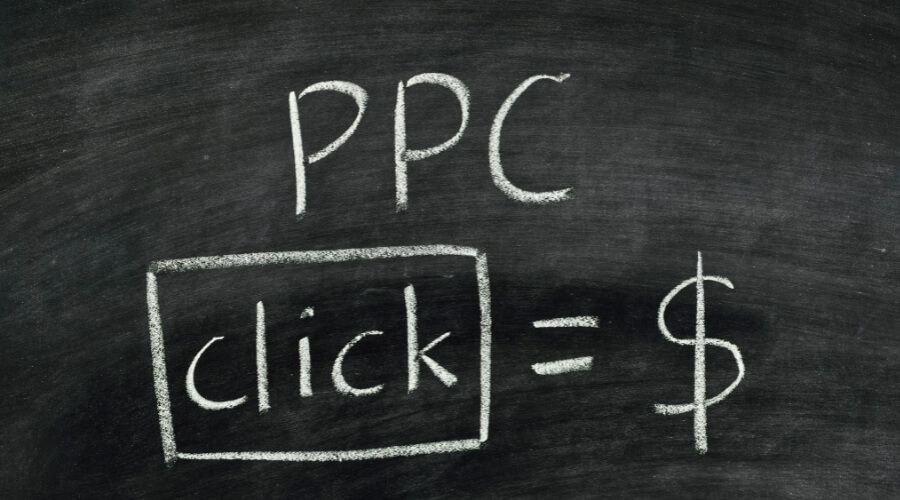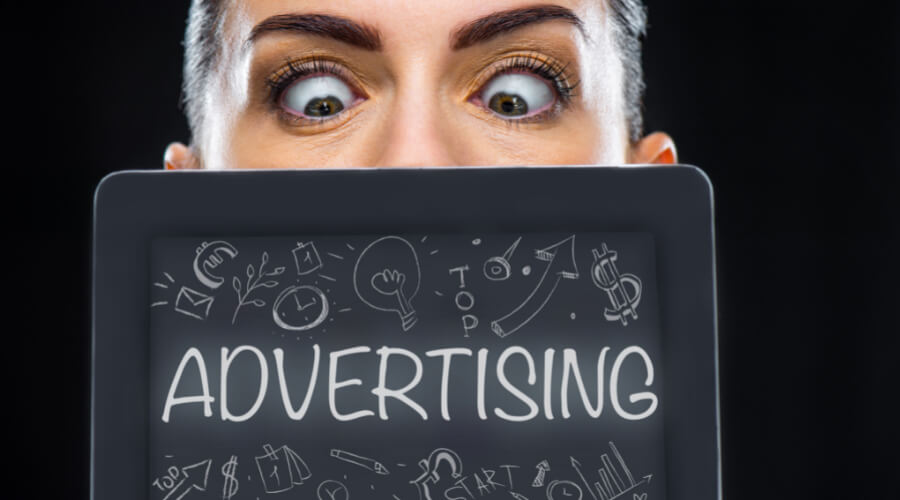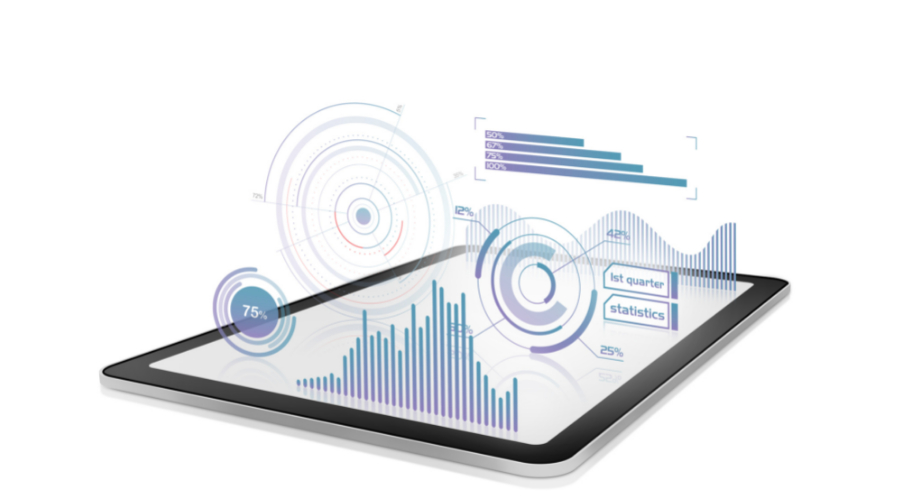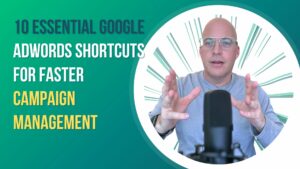PPC marketing, which stands for Pay-Per-Click marketing, is an effective advertising method. With PPC, advertisers pay for each click that directs users to their websites. This approach enables them to target specific audiences and achieve rapid results precisely. By bidding on keywords, advertisers can optimize their campaigns and track the return on investment (ROI) associated with PPC. In essence, PPC involves paying a nominal fee to drive traffic to your site, ensuring you only pay for actual visits. While it doesn’t guarantee purchases, it does guarantee visibility, ensuring that users at least see your page.
Significance of PPC Marketing to Stay Competitive in 2023
In the ever-evolving marketing landscape, PPC marketing has become essential for businesses to maintain competitiveness. PPC is pivotal in achieving business success by driving traffic, generating leads, and delivering measurable results. Failing to invest in PPC puts businesses at risk of losing out to their competitors in the customer race. Companies must remain updated on the latest PPC trends and leverage them to accomplish their marketing goals not only in 2023 but also in the future.
In today’s highly competitive marketing environment, the number of potential customers remains finite. If your competitors outperform you, they effectively capture a larger share of those potential customers, which is unacceptable. It is imperative to stay at the cutting edge and seize every possible advantage. Only by continuously striving for improvement and exploiting every opportunity can businesses maintain a competitive edge in the marketplace.
During the early 2000s, PPC advertising experienced a rapid surge in growth. Its cost-effectiveness, precise targeting capabilities, and user-friendly nature contributed to its widespread adoption. As businesses increasingly transitioned to online platforms, PPC emerged as a crucial tool for driving website traffic and generating valuable leads. Over time, PPC has evolved with technological advancements, revolutionizing how advertisers connect with their target audiences. Millions of advertisers actively compete for top positions on various platforms, further highlighting the significance of PPC advertising in today’s digital landscape
Evolution of PPC
PPC advertising has become more advanced. Advancements include targeting, bidding, and ad formats. Advertisers can target based on demographics, interests, and behaviors. They can adjust bids in real-time to maximize ROI. Ad formats evolved, with video, display, and shopping ads. Advances in machine learning and automation make it easier to manage and optimize campaigns.
Initially, it was as simple as finding a search term such as “car insurance” and bidding against others to be shown on the search results when someone searched for that exact search term. The term “car insurence” (insurance misspelled) would be a separate bid.
These days, you do not have to specify exact keywords, only a range, and then the language algorithms will work out the rest for you—even the misspellings.
Staying current with PPC trends is vital to remain competitive in 2023. Advertisers need to adapt to new strategies to maximize ROI. It requires ongoing learning, testing, and embracing new technologies. Being proactive helps advertisers position themselves for success in 2023 and beyond.
As mentioned, if you let your competitors get ahead, you will have more difficulty catching up and staying competitive. Always knowing what works and what doesn’t is money in the bank. Also, jumping on a new trend can have tremendous advantages. There is less competition, while the others are catching up to you instead.
Types of PPC Advertising
Google Ads search advertising creates text ads that appear on search results. Advertisers bid on keywords and pay only when a user clicks. Ads target geographic locations, demographics, and behaviors. Ad extensions provide more information. Google Ads search advertising is highly effective for driving targeted traffic and generating leads.
Google Ads is the biggest search advertising platform that enables advertisers to create targeted ads, set budgets, and track performance. With billions of daily searches, Google Ads offers various ad formats and analytics tools to maximize ROI.
As Google adds new features, it continues to be a crucial tool for businesses to reach their target audience and drive conversions.
Selecting the right keywords is essential in search advertising. It helps ads reach the right audience, improving ad quality and increasing conversions. Advertisers should also consider keyword competition and search volume to determine which keywords drive the best results. Ongoing keyword research and adjustments based on performance are crucial for optimizing search advertising campaigns.
Display Advertising

Display advertising places ads on digital channels such as websites and social media. Ads include banners, videos, and interactive types and target specific audiences based on behavior and demographics. Clicking on an ad leads users to a landing page with more information about the product or service.
Different Types of Display Advertising
Banner ads are static or animated ads at the top or side of a webpage. Interstitial ads are full-screen and show between-page transitions. Native ads blend in with the webpage content. Display ads also include video, rich media, and social media ads. Each type of ad has unique benefits for specific marketing goals.
Targeting Options Available in Display Advertising
Display advertising targets specific audiences based on demographics, geography, and behavior. Remarketing targets users who previously interacted with the brand. Targeting options help reach the ideal audience and increase the ad campaign’s effectiveness.
How Display Advertising Networks Operate
Display advertising networks use cookies and targeting to show ads to specific audiences across various websites. Advertisers can reach their intended audience through demographic, geographic, and behavioral targeting. The Google Display Network and other networks place ads on millions of sites and offer banner, interstitial, and native ad formats.
Ad Formats Available
Display advertising has various customizable ad formats to achieve different goals and placements. Static image ads have a single image with text. Animated ads have simple motion graphics.
Video ads are increasingly popular, and interactive ads let users engage with the ad. Native ads blend into content for a seamless experience. Advertisers can choose ad formats based on goals and audience.
Importance of Creative Design and Ad Placement for Effective Display Advertising
Display advertising needs visually appealing ads and strategic placement to attract viewers. Ads should be placed where they’re more likely to be seen and clicked on by the target audience. Consider the context, audience interests, and behavior. Testing and optimization of ad creative and placement can improve performance and ROI.
Social Media Advertising

Social media advertising utilizes platforms to promote products or services to specific audiences. Advertisers create campaigns and target users based on demographics, interests, and behaviors.
Ads can be images, videos, or carousels shown on social media feeds. Advertisers monitor performance data to improve ROI. Popular social media advertising platforms are Facebook, Instagram, Twitter, LinkedIn, and Pinterest.
Different Social Media Advertising Platforms
Businesses can advertise on popular social media platforms like Facebook, Instagram, Twitter, and LinkedIn. Facebook and Instagram have various ad formats, targeting options, and optimization features. Twitter Ads target users based on interests, behaviors, and keywords. LinkedIn Ads are suitable for B2B marketing and targeting professionals in specific industries or job roles.
Targeting Options Available in Social Media Advertising
Advertisers can reach people based on age, gender, education, job title, interests, and online activities. Platforms use interest-based targeting to reach those interested in the product or service. Behavior-based targeting targets past activities like searches and purchases. Advertisers can also target people based on location, language, and device usage. These targeting options help ensure ads reach the right audience.
How Social Media Advertising can be Used for Different Marketing Objectives?
Social media advertising can achieve different marketing goals like brand awareness, lead generation, and direct sales. Retargeting campaigns show ads to people who have interacted with a brand before. Other ad formats, like image and video ads, can be used to achieve these goals.
Different Ad Formats are Available
Social media ads come in different formats. Image ads are straightforward and show off your product. Video ads are ideal for demonstrating your product or telling a story. Carousel ads let users swipe through several images or videos in one ad. Stories ads are full-screen ads between users’ stories, which can contain images, videos, or animations.
Creating Ad Campaigns
For social media advertising success, understand the target audience and create campaigns for their behaviors and demographics. Use each platform’s unique features and ad formats. Stay updated on trends and best practices to keep campaigns engaging and effective.
Video Advertising (YouTube Ads)

Video advertising is using videos to promote products, services, or brands. Ads can be shown before, during, or after a video. Advertisers can target demographics, interests, and behaviors and use different formats like skippable, non-skippable, and bumper ads. Advertisers only pay when viewers watch, making it cost-effective.
Different Video Advertising Platforms
Advertisers can use different video advertising platforms, such as Vimeo, Twitch, and TikTok, but YouTube Ads are the most popular. YouTube Ads offers various video ad types and targeting options, including TrueView ads, non-skippable ads, and bumper ads.
Types of Video Ads
Skippable TrueView in-stream ads play before or during YouTube videos. This is skipped after 5 seconds. Discovery ads appear in search results or homepages and lead to the advertiser’s video. Non-skippable bumper ads are 6 seconds and are used for brand awareness. Each type of ad has a unique purpose.
How Video Ads Can be Used for Different Marketing Objectives
Using video ads can increase brand awareness, engagement, and conversions. Interesting and informative content can capture the audience’s attention. Videos can also encourage actions such as visiting a website or purchasing. Different video ads, like in-stream, Discovery, and bumper ads, can be used depending on the marketing objective.
Video advertisers can target users based on demographics, geography, and interests. Demographic targeting is based on user characteristics, while geographic targeting is based on location. Interest-based targeting is based on user interests and behaviors, such as video preferences and search history.
To make suitable video ads, grab and hold viewer attention. Content should be relevant, concise, and engaging. Use strong visuals and audio to convey the message. Consider the ad’s placement in the video. Finally, end with a clear call-to-action to encourage viewer action.
Setting Up a PPC Campaign

Set clear goals and objectives. It is essential for a successful PPC campaign. It helps define expectations, measure success, and make informed decisions about budget and targeting. Without clear goals, the campaign may be directionless and ineffective, wasting resources. Businesses must set goals and objectives such as increasing website traffic or boosting sales. Clear objectives help to ensure the campaign is focused on achieving specific outcomes and can be measured for success.
SMART Goals
When setting goals for a PPC campaign, use the SMART method: specific, measurable, achievable, relevant, and time-bound. Clearly define goals, track progress, ensure they’re realistic and relevant, and set deadlines for completion. This helps everyone involved understand what they’re working towards and improves the chances of success.
Aligning PPC Goals and Objectives with Business Goals and Objectives
To align PPC goals with business objectives, define specific PPC goals that support them. For example, increasing sales may require generating a particular number of conversions. Regularly reviewing and adjusting goals is essential. Communication and collaboration between departments can ensure alignment with business strategies.
Use tools like Google Analytics and conversion tracking to track progress and measure success in PPC campaigns. Conversion tracking monitors website actions, while analytics track traffic, engagement, and other metrics. Analyze data to optimize campaigns, adjust bids, and refine targeting. Monitor metrics like cost per acquisition and return on investment to assess campaign success. Use A/B testing to test different ad variations and landing pages.
Continuously monitor and adjust campaigns to improve performance and achieve goals.
Choosing the Right Platform

Picking the right PPC platform is essential for achieving campaign goals and reaching the target audience. Research and evaluate platforms like Google Ads, Facebook Ads, and LinkedIn Ads to match your business and campaign objectives. Different platforms have strengths and weaknesses, demographics, and ad options. Choosing the right one helps achieve better ROI and reach the right audience.
Different PPC Platforms Available
Different PPC platforms have strengths and weaknesses, so choose the one that matches your goals. Popular platforms are Google Ads for search, display, and video ads; Facebook Ads for a diverse audience and ad formats; and LinkedIn Ads for B2B targeting. Other options are Twitter Ads for real-time engagement and Amazon Advertising for e-commerce. Research each platform’s unique features and targeting options to determine the best fit for your campaign. The strengths and weaknesses of each platform include targeting options, ad formats, and cost.
- Google Ads: high search volume, precise targeting, expensive keywords.
Google Ads Strengths
-
High Search Volume: Google Ads has an incredibly high search volume, with millions of people using Google daily to search for products, services, and information. This means businesses can reach a large audience and potentially attract new customers through ads.
-
Precise Targeting: Google Ads offers precise targeting options allowing businesses to reach their target audience. Advertisers can target specific keywords, demographics, interests, and locations, ensuring that the right people see their ads.
-
Ad Formats: Google Ads offers a variety of ad formats, including text ads, display ads, video ads, and shopping ads. This allows businesses to choose the best format for their products or services.
-
Conversion Tracking: Google Ads allows businesses to track conversions, which means they can see exactly how many people clicked on their ads and took action on their website. This information can be used to optimize their ads and improve their ROI.
Google Ads Weaknesses
-
Expensive Keywords: The cost of keywords on Google Ads can be very high, especially for popular keywords. This means that smaller businesses with limited budgets may struggle to compete with larger companies.
-
Competition: Google Ads is a highly competitive platform, with many businesses competing for the same keywords and audience. This means that it can be difficult for businesses to stand out and get their ads seen.
-
Ad Fatigue: Users may become tired of repeatedly seeing the same ads, especially if they are irrelevant to their interests. This can lead to ad fatigue, where users start ignoring ads altogether.
-
Complex: Google Ads can be complex, with many features and settings that can be overwhelming for beginners. Businesses may need to invest time and money learning how to use the platform effectively.
-
- Facebook Ads: broad targeting options, visually appealing ads, low cost, high competition.
Facebook Ads Strengths:
-
Broad Targeting Options: Facebook Ads offers various targeting options, including demographics, interests, behaviors, and geographic location. This allows businesses to reach a broad audience likely interested in their products or services.
-
Visually Appealing Ads: Facebook Ads allows businesses to create visually appealing ads that include images, videos, and carousels. This can help businesses capture the attention of their audience and increase engagement.
-
Low Cost: Facebook Ads can be relatively inexpensive compared to other advertising platforms, making them accessible to businesses with smaller budgets.
-
Conversion Tracking: Facebook Ads allows businesses to track conversions, which means they can see how many people clicked on their ads and took action on their website. This information can be used to optimize their ads and improve their ROI.
Facebook Ads Weaknesses
-
High Competition: Facebook Ads is a highly competitive platform, with many businesses competing for the same audience. This can make it difficult for businesses to stand out and get their ads seen.
-
Ad Fatigue: Users may become tired of repeatedly seeing the same ads, especially if they are irrelevant to their interests. This can lead to ad fatigue, where users start ignoring ads altogether.
-
Limited Search Intent: Unlike Google Ads, Facebook Ads does not capture search intent, meaning that users may not actively look for the advertised products or services.
-
Limited Ad Placement Control: Facebook Ads may not offer as much control over ad placement as other platforms, which can lead to ads being shown in places that are irrelevant to the target audience.
-
- LinkedIn Ads: professional targeting, B2B focus, expensive cost per click.
LinkedIn Ads strengths
-
Professional Targeting: LinkedIn Ads offers some of the most professional targeting options available, allowing businesses to reach decision-makers and professionals in specific industries, job titles, and companies.
-
B2B Focus: LinkedIn Ads is the perfect platform for businesses targeting other businesses, as it allows advertisers to reach professionals who are likely to be interested in their products or services.
-
Ad Formats: LinkedIn Ads offers a variety of ad formats, including Sponsored Content, Sponsored InMail, and Display Ads. This allows businesses to choose the best format for their goals and audience.
-
Conversion Tracking: Like Facebook Ads and Google Ads, LinkedIn Ads allow businesses to track conversions, which can help them optimize their campaigns and improve their ROI.
LinkedIn Ads Weaknesses
-
Expensive Cost Per Click: LinkedIn Ads can be more expensive than other platforms, with a higher cost per click. This can make it challenging for businesses with limited budgets.
-
Limited Audience: LinkedIn Ads may not be the best platform for businesses targeting a wide audience, as it has a more limited user base than other platforms like Facebook and Google.
-
Limited Ad Formats: LinkedIn Ads offers various ad formats, but it may not offer as much flexibility as other platforms like Facebook and Google, which can limit creativity.
-
Limited Ad Placement Control: Like Facebook Ads, LinkedIn Ads may not offer as much control over ad placement as other platforms. This can lead to ads being shown in places irrelevant to the target audience.
-
- Twitter Ads: real-time targeting, low cost per click, fewer visual options.
Twitter Ads Strengths
-
Real-Time Targeting: Twitter Ads allow businesses to reach users in real-time as they engage with trending topics, events, and conversations. This can help businesses stay relevant and reach users when they are most engaged.
-
Low Cost Per Click: Twitter Ads can be relatively inexpensive compared to other advertising platforms, making them accessible to businesses with smaller budgets.
-
Audience Targeting: Twitter Ads offers various targeting options, including demographics, interests, behaviors, and geographic location. This allows businesses to reach a targeted audience likely to be interested in their products or services.
-
Engagement Metrics: Twitter Ads offers detailed engagement metrics, including likes, retweets, and replies, which can help businesses measure the effectiveness of their campaigns and optimize their ads.
Twitter Ads Weaknesses
-
Less Visual Options: Twitter Ads may not offer as many visual options as other platforms like Facebook and Instagram. This can make it challenging for businesses to create visually appealing ads that capture their audience’s attention.
-
Limited Ad Formats: While Twitter Ads offers a variety of ad formats, it may not offer as much flexibility as other platforms like Facebook and Google, which can limit creativity.
-
Limited Search Intent: Like Facebook Ads, Twitter Ads do not capture search intent, meaning users may not actively look for the advertised products or services.
-
High Competition: Twitter Ads is a highly competitive platform, with many businesses competing for the same audience. This can make it difficult for businesses to stand out and get their ads seen.
-
- Amazon Ads: product-based targeting, high conversion rates, expensive cost per click.
Amazon Ads Strengths
-
Product-Based Targeting: Amazon Ads allows businesses to target customers based on the products they are searching for and buying on Amazon. This ensures that businesses reach customers who are already interested in their products.
-
High Conversion Rates: Amazon Ads have been shown to have higher conversion rates compared to other advertising platforms, making it a valuable investment for businesses looking to drive sales.
-
Customer Intent: Amazon Ads capture customer intent, as users actively search for and buy products on Amazon. This means that businesses can reach customers who are in the buying mindset and ready to make a purchase.
-
Competitive Cost: Amazon Ads can be competitive in terms of cost per click compared to other advertising platforms like Google Ads.
Amazon Ads Weaknesses
-
Limited Ad Formats: Amazon Ads may not offer as much flexibility in ad formats as other platforms like Facebook and Google.
-
Competitive Landscape: Amazon Ads is a highly competitive platform, with many businesses competing for the same audience. This can make it difficult for businesses to stand out and get their ads seen.
-
Limited Reach: Amazon Ads are limited to Amazon’s platform, which may not reach as wide an audience as other platforms like Facebook and Google.
-
Expensive Cost Per Click: While Amazon Ads can be competitive in terms of cost per click, they can also be expensive for certain industries and keywords.
-
Tips for Researching and Comparing Different Platforms
When choosing a PPC platform, think about your target audience and goals. Research and compare different platforms, examine their strengths and weaknesses, and review targeting options and ad formats. Also, consider the cost and popularity of the platform. Use platform-specific resources to optimize your campaign’s success. Try out different PPC platforms through A/B testing to find the best one for your business. Create identical ads and run them on different platforms to compare performance. Analyze ad performance using platform-specific analytics tools and make data-driven decisions. Keep refining and adjusting campaigns for the best results.
Creating Ad Groups and Selecting Keywords

To set up a successful PPC campaign, organize your ads into relevant ad groups and choose keywords that closely relate to your product or service. Grouping your ads by theme or product can improve ad relevance and attract more clicks. Choosing relevant keywords helps you to reach the right audience and optimize your ad spend, resulting in a better return on investment. Research and choose keywords people actively search for to ensure your ads reach the right audience.
How to Structure Ad Groups and Campaigns
To structure ad groups effectively, group similar keywords and ads together. This helps increase relevance and click-through rates. Campaigns can be structured based on product type, location, or marketing objective. Each ad group should have its own set of keywords and ads. Monitoring and adjusting ad groups and keywords regularly based on performance data to drive better campaign performance is important.
Using Keyword Research Tools
To choose effective keywords for a PPC marketing campaign, use keyword research tools to find related keywords and check their search volume and competition level. Also, identify negative keywords to exclude irrelevant search queries. Negative keywords are words or phrases you don’t want your ad to appear for.
This ensures that your ad only shows to users likely interested in your product. Your PPC marketing campaigns can be more effective with relevant and negative keywords.
Tips for Selecting the Right Keywords
-
Use keyword research tools to analyze search volume and competition.
Using keyword research tools to analyze search volume and competition, businesses can identify high-value keywords that will attract their target audience and help them stand out in a competitive landscape. These tools can provide valuable insights into the search behavior of potential customers and help businesses optimize their ad copy and targeting to increase their chances of success. By investing time in keyword research, businesses can ensure that they target the right audience with the right messaging and achieve their advertising goals more efficiently.
-
Choose keywords that align with your campaign goals and target audience.
When selecting keywords, it is important to consider your campaign goals and target audience and choose keywords that align with those factors. By selecting keywords relevant to your products or services that match potential customers’ intent, you can increase the chances of your ads being seen by the right audience. Additionally, using long-tail keywords, which are more specific and have lower competition, can be a smart strategy for reaching niche audiences and standing out in a crowded market. By taking the time to carefully select keywords that align with your campaign goals and target audience, you can optimize your advertising efforts and maximize your return on investment.
-
Consider long-tail keywords for niche targeting and lower competition.
Long-tail keywords are specific, multi-word phrases that are used to target a specific audience or niche. They often have lower search volume and competition than broad keywords, but they can effectively reach users searching for specific products or services. For example, instead of targeting the broad keyword “shoes,” a business could target a long-tail keyword such as “women’s running shoes with arch support.” Using long-tail keywords, businesses can target customers who are further along in the buying process and have specific needs or interests, resulting in higher conversion rates and a better return on investment.
-
Use negative keywords to prevent ads from showing for irrelevant searches
Negative keywords are a powerful tool for optimizing advertising campaigns by preventing ads from showing for irrelevant searches. A business can specify words or phrases to ensure their ads do not appear for specific search queries. For example, if a business sells high-end watches, they might use “cheap” or “affordable” as negative keywords to ensure that their ads do not appear for users searching for lower-priced options. By using negative keywords, businesses can improve the relevance and quality of their ads, increase click-through rates, and reduce wasted ad spend. It is essential to conduct regular reviews of negative keywords and refine them to ensure that ads are not shown for irrelevant searches.
Creating Compelling Ad Copy
To get people to click on your ads, write copy that speaks to them, emphasizes the value of your product, and supports your campaign goals. Good ad copy can boost click-through rates and improve campaign results. o create great ad copy, use an attention-grabbing headline, highlight unique benefits, and include a clear call to action. Avoid jargon, use active voice, and align your copy with your landing page. Experiment with different variations to find the best-performing ad.
Tips for Tailoring Ad Copy
Tailor ad copy to the platform and ad format being used. Use best practices, such as clear headlines, emphasizing unique selling points, and including calls to action. For Google Ads text ads, use keyword insertion. Use eye-catching images or videos to highlight different products for Facebook Ads carousel ads. Always include a clear call to action.
Testing different ad versions is essential to find the best-performing ad copy. A/B testing helps you compare and optimize other elements, such as headlines and calls to action. Continuous testing can boost click-through rates and ROI. Analyzing performance data can guide decisions about which ads to keep, pause, or replace.
Compelling ad copy aligns with campaign goals, such as increasing click-through rates or conversions. Use attention-grabbing headlines and clear calls to action for click-through rates. Highlight unique selling propositions and offer incentives for conversions. Incorporate relevant keywords and highlight benefits for ad relevance. Aligning ad copy with goals creates more targeted and effective ads.
Setting Up Bid Strategies

Bid strategies are essential in determining the amount paid per click. Choosing the right strategy, like manual, automatic, or target CPA, impacts ad rank, cost per click, and campaign results. Selecting the best bid strategy for achieving marketing objectives and optimizing campaign performance is essential. To run effective PPC campaigns, picking the right bidding strategy is necessary.
You can either bid manually or use automation. Manual bidding offers control but needs expertise. Automated bidding is easy but limits power.
Target CPA bidding suits conversion-focused campaigns while maximizing clicks for awareness campaigns. Decide based on campaign goals and resources. A/B testing different strategies can boost campaign performance.
Maximize control by setting bids at ad group and keyword levels. Adjust using performance data, raising for higher conversion rates. Identify profitable keywords with research. Monitor and adjust bids for better performance. Estimate changes with bid simulators. Set bids based on the sales funnel stage. Keep evaluating and adjusting for the best results.
Improve campaign performance with ongoing bid optimization and testing. Test different strategies and simulators. Monitor data and adjust bids. Try bid modifiers and A/B test ad group and keyword bids. Keep evaluating and revising.
Optimizing Your PPC Campaign

Analyzing and Adjusting Keyword Bids
Review keyword performance regularly. Use simulators to estimate bid impact. Increase bids for top-performing keywords. Lower bids for underperforming ones. Research and identify new profitable keywords. Set bids based on the sales funnel stage. Adjust based on external factors. Evaluate and adjust regularly for optimal performance and ROI. A/B test to find an effective bidding strategy.
Optimize campaign performance with bid adjustment tools. Adjust based on time, device, location, and demographic. Use simulators to estimate impact. Evaluate and adjust regularly. Adjust based on competition. Streamline with automated rules. A/B tests different adjustments to find an effective strategy.
Analyze search query reports to find new keywords. Add high-performing ones, and exclude underperforming ones. Use negative keywords to avoid irrelevant searches. Regularly update search query reports. Research new profitable keywords. Adjust keyword bids based on performance. Adjust based on competition. Test different bidding strategies. Analyzing search query reports improves targeting and campaign performance.
Set bid limits and prioritize the budget for top-performing keywords to avoid overspending. Use automated rules and bid simulators to adjust bids. Monitor performance data and adjust bids and targeting accordingly. Regularly update keyword lists and use negative keywords to exclude irrelevant searches.
Test different bidding strategies, ad copy, and landing pages. Keep an eye on the competition and adjust bids and targeting accordingly. By setting bid limits, advertisers can optimize budgets and improve campaign performance.
To stay competitive in PPC, analyze competitor bids and market trends. Adjust bids accordingly and monitor performance data. Identify new opportunities with keyword research. Use unique selling propositions to stand out from competitors. Test different bidding strategies and adjust bids to improve performance.
Refining Ad Copy and Ad Targeting

Improve ad relevance and performance by refining ad copy and targeting. Test different ad variations. Stand out from competitors with unique ad copy. Use targeted ad groups to reach specific audiences. Refine targeting based on user behavior and demographics. Adjust bids to prioritize top-performing ads. Continuously refine ad copy and targeting to improve campaign performance and maximize ROI.
To improve ad effectiveness, analyze ad performance data. Check click-through and conversion rates. Test different ad variations and targeting parameters. Use A/B testing to compare results. Adjust bids to prioritize top-performing ads and refine targeting.
Try A/B testing with different ad variations, including headlines, descriptions, and display URLs, to improve ad copy and targeting. Use calls-to-action to boost click-through rates and include relevant keywords to increase relevance. Regular analysis of performance data can refine underperforming ads. Test ad formats and target options that can improve ad performance. Monitor and adjust targeting based on performance data to achieve optimal results.
PPC targeting options include geographic, demographic, and device targeting. Geographic targeting targets specific locations, while demographic targeting targets age and gender. Device targeting targets device types. Understand your audience and tailor targeting. Use data to identify audience characteristics and test different targeting options.
Audience targeting lets you target users based on interests, behaviors, and demographics to increase conversions. Remarketing targets users who’ve interacted with your brand. Create custom audiences from website visitors and email subscribers. Dynamic remarketing shows relevant ads to users who’ve viewed specific products.
To achieve effective PPC, align ad copy and targeting with campaign goals and user intent. Continuously test and refine to improve performance. Make sure targeting options and ad copy match the intended audience. Use performance data to optimize targeting and ad copy for better results.
Monitoring and Analyzing Campaign Performance

To optimize ad spending and improve campaign effectiveness, monitor and analyze performance. Analyze key performance indicators, like click-through and conversion rates, and adjust based on data. Identify high-performing keywords, ads, targeting options, and areas for improvement. Regular monitoring and analysis allow strategic adjustments to improve ROI and reach campaign goals.
To track campaign performance, monitor CTR, CPC, conversion rate, and ROAS. CTR measures clicks per ad impression. CPC calculates the cost per click. The conversion rate estimates users who complete the desired action. ROAS measures return on investment for each dollar spent.
To improve PPC campaigns, use performance data to adjust bids for high-performing keywords and refine ad copy with solid calls-to-action. Optimize targeting with audience targeting and remarketing options, and adjust the device and geographic targeting.
To optimize PPC campaigns, use performance data in different ways. Adjust bids for high-performing keywords and refine ad copy with solid calls to action. Optimize targeting with audience targeting and remarketing options. Monitor device and geographic targeting and review search terms and negative keywords. Analyze conversion data for better ROI.
To ensure success and ROI, regularly monitor and optimize campaigns. Track key metrics and analyze performance data to identify areas for improvement. Continuously test and refine ad copy, targeting, and bids. Failure to monitor and optimize can result in wasted ad spend and missed growth opportunities.
Regularly monitor and optimize campaigns to ensure success and ROI. Set up alerts and track competitors. Measure and analyze key metrics. Identify areas for improvement and adjust targeting, ad copy, and bids. Review search terms and negative keywords. Use A/B testing to refine ad variations and continuously test and optimize campaigns.
Using A/B Testing to Improve Conversion Rates

A/B testing involves comparing two ads to see which performs better. Two versions are created, and one variable is changed. The performance is measured using metrics like CTR or conversion rate. The higher-performing version is selected, and the process is repeated with a new variable. This continuous process optimizes ad copy and landing pages for better conversion rates.
It can be used to test various elements of an ad.
A/B testing compares two versions to improve conversion rates. Advertisers can test different factors, such as headlines and images, to determine which version performs better. This helps to optimize ad performance and achieve better ROI. A/B testing is valuable for identifying effective messaging, design, and targeting strategies and can guide future campaign optimizations.
A/B testing is a helpful tool for optimizing landing pages. Test different versions to find what works. Determine which page elements are practical, such as headlines, images, and calls to action. Identify the best landing pages for different types of ads. Improve conversion rates and maximize the ROI of PPC campaigns.
A/B testing is essential for improving PPC marketing campaign success. By comparing different versions of ads and landing pages, advertisers can identify what works best for their target audience. This improves conversion rates, optimizes ad spend, and ensures budgets are used effectively.
A/B testing allows continuous refinement and improvement of campaigns, staying ahead of the competition and achieving the best results.
Identifying and Eliminating Wasted Ad Spend

Wasted ad spend is when the budget is spent on non-performing keywords or ads. This can be due to ineffective targeting or bidding strategies. Eliminating wasted ad spend is crucial for maximizing ROI. Advisers must regularly review and remove irrelevant keywords and targeting options to eliminate wasted ad spend. They should remove poorly performing keywords, refine targeting settings, and avoid broad-match keywords.
To reduce wasted ad spend, review search terms and add negative keywords. Analyze which terms trigger ads and identify irrelevant ones. Add those terms as negative keywords to prevent ads from showing for them. Regularly update negative keyword lists to keep up with new irrelevant terms.
To prevent irrelevant traffic and reduce wasted ad spend, exclude demographics, locations, or devices. Advertisers can exclude age ranges, genders, locations, or devices. Regularly reviewing and updating these exclusions can refine targeting and improve campaign efficiency.
Advertisers must adjust bid strategies for underperforming keywords or campaigns to optimize ad spend. By increasing bids for high-performing keywords and decreasing bids for low-performing ones, they can maximize their ROI. Removing keywords or pausing campaigns with poor performance is also essential.
Regular monitoring and adjustment of bid strategies are crucial for effective ad spend. Advertisers can eliminate wasted ad spend and improve PPC marketing campaign results by optimizing bid strategies.
Regularly monitoring and optimizing campaigns is important to prevent wasted ad spend. Advertisers should review performance metrics, use A/B testing and automation tools to optimize ads, and adjust budgets. By proactively optimizing campaigns, advertisers can achieve better results from their PPC efforts and avoid wasting advertising dollars.
Advanced PPC strategies

Retargeting and Remarketing
- Retargeting allows advertisers to target users who have previously interacted with their website or ads.
- Remarketing involves targeting users who have previously interacted with a brand or its products to convert them into customers.
Benefits of Retargeting and Remarketing for PPC Campaigns.
Retargeting and remarketing bring back potential customers who didn’t convert by displaying personalized and relevant ad messaging. It increases brand awareness and recall, leading to higher conversion rates and ROI. Targeted ads can be shown across multiple channels and devices. These tactics are cost-effective and only target those who have shown interest before. They help improve PPC campaign results and overall advertising performance.
Types of Retargeting/Remarketing Campaigns
Advertisers can use different retargeting and remarketing campaigns to reach specific audiences in their PPC efforts. Site retargeting targets past website visitors, search retargeting targets those who searched for relevant keywords, email remarketing targets past email subscribers, and social media remarketing targets those who engaged with the brand on social media. Other types include video, dynamic, and CRM retargeting. Advertisers can achieve better results from these campaigns from their PPC efforts.
Retargeting and remarketing are effective in increasing conversions and ROI for PPC campaigns
Retargeting and remarketing are effective in increasing conversions and ROI for PPC campaigns. They target interested individuals and show personalized ads to increase sales. These strategies also improve brand awareness and recall, leading to future sales. Using them can significantly improve advertising performance and achieve better results from digital marketing efforts.
Best practices for Creating Effective Retargeting/Remarketing Campaigns.
Advertisers should target the right audience and use relevant messaging to create successful retargeting and remarketing campaigns. They should also limit ad frequency, use visually appealing ad creatives, and optimize landing pages. Analyzing campaign performance can help identify areas for improvement. It’s important to comply with relevant laws and regulations.
Tools and Platforms for Implementing Retargeting/Remarketing Campaigns.
Advertisers have several tools to implement retargeting and remarketing campaigns. Popular platforms include Google Ads, Facebook Ads, AdRoll, Criteo, and Perfect Audience. Email marketing platforms like Mailchimp and Constant Contact also offer to remarket. These platforms provide targeting options, ad formats, and reporting tools.
Advertisers can use pixels to track user behavior and serve relevant ads. Using these tools, they can create effective campaigns that drive conversions and improve overall PPC performance.
Dynamic Product Ads

Dynamic Product Ads (DPAs) are retargeting ads that display personalized product ads to users who interacted with a brand or visited its website. They show customized ads based on the user’s previous interactions with a brand using a product catalog. DPAs feature specific products, prices, and promotions and are served across Facebook, Instagram, and Google. They increase conversions by targeting users’ interests and behaviors, resulting in a higher return on ad spend. Dynamic Product Ads are a potent tool for advertisers to improve their PPC performance.
This helps ecommerce businesses by retargeting users who abandoned a shopping cart or viewed specific products. Advertisers can encourage users to complete their purchases and upsell or cross-sell related products. With personalized ad content, it can help increase conversions and revenue.
DPAs create personalized ads using product information, increasing relevance and engagement and driving higher click-through and conversion rates. With customized ad content based on user behavior, DPAs are a valuable tool for ecommerce advertising.
Dynamic Product Ads (DPAs) help ecommerce businesses show personalized ads to users interacting with their products or services. Moreover, these ads retarget users who have abandoned their shopping cart or viewed specific products without making a purchase. DPAs are available on various platforms like Facebook, Instagram, and Google and display product information dynamically from a product catalog. To set up DPAs, businesses must create a product catalog, make a product feed, and configure their ad campaign.
Optimizing DPAs
To optimize Dynamic Product Ads (DPAs), businesses can adjust their product feed and test different ad formats and messaging. They can also create campaigns for customer journey stages and analyze performance to improve ROI. Additionally, setting bid adjustments for users who have viewed or added products to their cart can increase conversions.
To increase conversions and revenue, ecommerce businesses should optimize their product catalog and feed when using Dynamic Product Ads. Furthermore, they can test ad formats and messaging, set bid adjustments for interested users, and regularly analyze performance. By following these practices, businesses can use DPAs effectively to reach targeted audiences and drive sales.
Geographic and Device Targeting

Targeting personalizes ads based on user location, while device targeting focuses on specific devices. Advertisers can optimize ad spend by adjusting bids and messaging accordingly. These targeting methods can increase ROI in PPC campaigns and improve user relevance.
Advertisers can improve ad relevance and ROI by targeting specific locations. Combining geographic targeting with device targeting creates highly targeted campaigns. Moreover, advertisers can target users based on their devices (mobile, tablet, desktop) to tailor ad messaging and formats, which boosts engagement and conversions.
Advertisers can use device targeting to adjust bids, show different ad formats or messaging, and exclude certain devices. They can also target specific operating systems or device models. When choosing device targeting strategies, it’s crucial to consider user behavior and intent.
Device targeting helps advertisers show ads on devices most likely to convert and adjust bids accordingly. This maximizes ROI and drives more conversions from PPC campaigns. Furthermore, device targeting can be combined with other options to create highly targeted campaigns for reaching the right users, devices, and locations.
Combining geographic and device targeting can reach specific users in certain areas and devices. It increases ad relevance and click-through rates and drives more conversions. For example, restaurants target mobile users in their area, and ecommerce businesses adjust bids based on different devices in different regions. Regular monitoring and adjustments ensure campaigns meet goals and reach the desired audience.
In-market and Affinity Targeting

In-market targeting allows advertisers to target users who have shown an active interest in specific products or services. This is based on user behavior and browsing history. In-market targeting helps businesses reach users actively searching for a product or service. It serves ads to those more likely to convert, increasing the chance of purchase. Advertisers can choose from a range of categories and target interested users. It’s a versatile option for reaching highly engaged audiences on various advertising platforms.
Affinity targeting reaches users with a general interest in specific topics based on their online behavior. It builds brand awareness and targets interested users. Unlike in-market targeting, it focuses on user interests and passions. It’s a way to reach a wider audience and target those interested in products or services.
In-market and affinity targeting reach users interested in a product or service. Advertisers can use these methods on multiple platforms to improve relevance and effectiveness. Furthermore, targeting user interests increases conversions and ROI. It also reaches new audiences and expands the customer base, allowing businesses to grow.
In-market and affinity targeting efficiently reach the target audience. They show ads to interested users and reduce wasted ad spend. Moreover, they’re available on Google Ads and social media platforms, allowing businesses to reach their audience across multiple channels. These targeting methods are valuable tools for PPC advertisers to improve ad performance and maximize ROI.
Advertisers must analyze performance metrics to reach their target audience and make necessary targeting adjustments. Making data-driven decisions and optimizing campaigns is essential to maximize ROI and achieve campaign goals.

Using Data and Analytics to Inform PPC Strategy
It’s essential to analyze your PPC campaign data to improve your strategy. Review metrics like click-through and conversion rates, and adjust targeting and messaging as needed. Tools like Google Analytics and audience insights can help you better understand your customers and create more effective campaigns. You can optimize your PPC campaigns and increase your ROI using data and analytics.
Google Analytics tracks website performance, showing visitor behavior like page visits and actions. Use this data to optimize PPC campaigns, such as which keywords generate clicks and conversions. Furthermore, take informed decisions on allocating your budget and adjusting targeting to reach your audience effectively.
You can identify successful and underperforming campaigns and ad groups by analyzing data and analytics. This helps you make informed decisions about where to allocate your ad budget and improve campaign performance.
Analyzing data helps advertisers refine their targeting and bidding strategies by identifying user behavior trends. Moreover, they can adjust their bidding and targeting based on data showing when users are more likely to convert or engage with ads and target specific demographics more effectively.
To use data to improve your PPC campaigns, you need to analyze it regularly. This helps you understand user behavior, find areas for improvement, and make informed decisions. Regular optimization can increase conversions and revenue, but the digital advertising landscape is constantly changing.
Stay up-to-date on trends and adjust your strategy to stay ahead of the competition. Finally, you can ensure your PPC marketing campaigns remain effective and profitable by consistently analyzing data and making strategic adjustments.

Taking Advantage of PPC Marketing
PPC is an effective marketing method that targets audiences through website ads, social media, and search engines. Using keywords, data analytics, and audience targeting, businesses can increase ROI, generate leads, and grow revenue. PPC can help achieve marketing goals such as brand awareness, website traffic, and sales. With careful planning and analysis, businesses can maximize PPC advertising.
Advertisers should use targeting options and analyze performance metrics to make the most of PPC marketing campaigns. A/B testing and optimization are also important for long-term success. Furthermore, by staying up-to-date and following these steps, businesses can achieve their goals and drive revenue.
Continuous optimization and monitoring are necessary to get the most out of PPC campaigns. This involves refining ad copy, adjusting bids, and eliminating wasted spend. Regular data analysis and testing can help improve targeting and conversions.
To stay competitive, businesses must stay up-to-date with PPC marketing trends and best practices.
Moreover, you must use data and analytics to make your PPC marketing campaign successful. Analyzing metrics like click-through and conversion rates can help you understand user behavior and refine your targeting and bidding strategies. A/B testing can help in identifying the best ad variations and landing pages.
Furthermore, staying up-to-date with PPC marketing trends is essential to stay ahead of competitors. Adapting to changes in algorithms and user behavior is crucial. Furthermore, keeping track of industry news and best practices ensures that PPC campaigns deliver maximum ROI.
Importance of Staying Up-To-Date with PPC Trends and Changes

PPC platforms often release updates and new features. Keeping up-to-date can help you improve your campaigns.
Knowing industry trends and best practices can also help you adapt to changes in consumer behavior. Staying informed can help ensure that your PPC campaigns remain effective and continue to drive results for your business.
Review and analyze campaigns regularly to improve your PPC strategy and make adjustments when necessary. Keeping up-to-date with industry trends is vital. Adapting to new technologies and audience behaviors is essential to reach your target audience.
Experiment with various ad formats to improve campaign performance continually
To keep up with PPC marketing trends, join online communities and attend industry events. This can help you learn from peers, make connections, and advance your career. Moreover, networking can also provide resources for continued learning and growth. Staying active can inform you about new features, strategies, and changes that may impact your campaigns.
To stay competitive, it’s crucial to keep up with emerging technologies like voice search and AI. Understanding their impact on PPC can give you an edge. Furthermore, regularly testing innovative tactics and exploring new opportunities can help you stay ahead of the curve and maintain a strong ROI for your campaigns.
Moreover, combining PPC with SEO and social media can improve your marketing strategy. You should be ready to adapt to changes in user behavior and preferences. Finally, you can get better results and stay competitive by staying updated with PPC trends and optimizing your campaigns.

Future of PPC Marketing in 2023 and Beyond
AI and machine learning will be utilized by PPC marketing. These technologies automate keyword research, ad testing, and bid management and improve targeting by analyzing data. AI’s ability to process data and make real-time adjustments can revolutionize PPC. We may also see more personalized and interactive ad experiences and the integration of emerging technologies like voice search.
PPC marketing will focus more on personalized campaigns for specific audience segments and individual user behavior. This will lead to better targeting and higher conversion rates. Moreover, with the growth of voice search and smart speaker technology, advertisers can reach consumers through voice-activated ads. Furthermore, advertisers must create campaigns optimized for voice search to benefit from increased usage. Smart speaker technology has also created opportunities for advertisers to deliver campaigns through these devices, such as sponsored content and custom skills.
Advertisers are shifting towards mobile-first strategies to prioritize mobile user experience. This involves optimizing ads and landing pages for mobile devices and utilizing click-to-call and location-based targeting to drive foot traffic. Augmented reality will also create interactive ads allowing users to try products. Furthermore, Advertisers must adapt to mobile devices and embrace new technologies to engage their audience effectively.
Moreover, advertisers are using AR and VR technologies to engage consumers in new ways. These platforms create immersive experiences that can capture attention and provide a memorable brand experience. Advertisers are investing in AR and VR to create more engaging ads, making it a significant trend to watch in PPC marketing.
PPC Marketing in 2023
The landscape of digital advertising continues to evolve and expand rapidly. Staying up-to-date with the latest trends and changes, regularly reviewing and analyzing your campaigns, and integrating PPC with other digital marketing channels is needed for true success. Furthermore, as the future of PPC marketing holds many possibilities, it’s essential to remain open-minded and adaptable to whatever the future may bring. Remember, in the world of PPC marketing, the only constant changes.
Read more Here Facebook Ads vs. Google Ads: Choosing the Right Platform for Your Paid Marketing Campaigns








